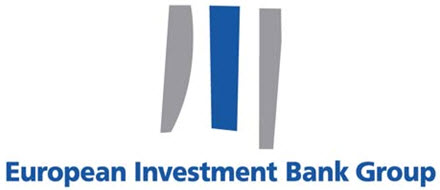Valuation and income recognition differences between IFRS and EU Accounting Directives
A Financial assets classified as available-for-sale
| | 1 | Debt securities portfolio |
Under EU Accounting Directives, debt securities portfolios are recorded at market value. The value adjustments are reported under “Net result on financial operations” in the profit and loss for the period in which they are made.
Accrued interest is recorded under balance sheet items “Prepayments and accrued income” or “Accruals and deferred income”.
Under IFRS, debt securities portfolios are carried at fair value with changes in fair value reflected directly in equity.
Impairment is recognised in the profit and loss for the year when negative changes in the fair valuation are other than temporary. It is reported separately on the face of the income statement.
Accrued interest is reported on the balance sheet within the balance of the instrument to which it relates.
| | 2 | Shares and other variable-yield securities |
Under EU Accounting Directives, shares and other variable-yield securities are initially recorded at acquisition cost. Their carrying value is adjusted to the lower of cost or market value at subsequent measurement at the balance sheet date. Under IFRS, shares and other variable-yield securities are carried at fair value with changes in fair value reflected directly in equity.
Impairment is recognised in the profit and loss for the year when negative changes in the fair valuation are other than temporary. It is reported separately on the face of the income statement.
B Financial assets and liabilities designated at fair value through profit or loss
| | 1 | Derivative assets and liabilities |
Under EU Accounting Directives, derivative instruments in the Bank’s available for sale and trading portfolios are marked to market and recorded under “Other assets” or “Other liabilities”.
Interest accrued under derivative instruments is presented under “Prepayments and accrued income” and “Accruals and deferred income”.
Under IFRS, all derivative assets and liabilities are recognised on balance sheet as such and carried at their replacement values.
Under EU Accounting Directives, hedging derivative instruments are not recognised on the balance sheet. They are carried off balance sheet at nominal amount.
Interest accrued under derivative instruments is presented under “Prepayments and accrued income” and “Accruals and deferred income”.
Under IFRS, all derivative assets and liabilities are recognised on balance sheet and carried at their replacement values.
Changes in fair values of derivatives are recognised in the profit and loss.
Under EU Accounting Directives, all loans and advances are carried at amortised cost. Accrued interest is recorded under balance sheet items “Prepayments and accrued income” or “Accruals and deferred income”.
Under IFRS certain loans are classified on initial recognition as “fair value loans” and valued at fair value through profit or loss. Accrued interest is reported on the balance sheet within the balance of the asset to which it relates. Transitory accounts on loans are reclassified from other liabilities to the loan balance to which they relate.
Under EU Accounting Directives, borrowings are recorded at amortised cost. Accrued interest is recorded under balance sheet items “Prepayments and accrued income” or “Accruals and deferred income”.
Under IFRS, EIB applies the fair value option to a significant portion of its issued debt. Accrued interest is reported on the balance sheet within the balance of the debt instrument to which it relates.
C Investment property
This category is not used under EU Accounting Directives. Assets in this category under IFRS are reported in the “Tangible Assets” category under EU Accounting Directives.
Under IFRS, assets in this category are held under the historical cost model.
D Pension funds
Under EU Accounting Directives, a 10% corridor approach is adopted, whereby prior year cumulative actuarial surpluses or deficits in excess of 10% of the commitments for retirement benefits are recognised over the average remaining service lives of the plan’s participants.
Under IFRS, the Group applies IAS 19 revised for determining the income or expense related to its post-employment defined benefit plans.
Cumulative actuarial surpluses and deficits are recognised in full in “Other comprehensive income”. Net interest cost is recognised in the income statement under “Interest expense and similar charges”.
E Minority interest adjustment
EIB granted a put option to the minority shareholders on their entire holding of the subsidiary.
Under EU Accounting Directives, this put option does not influence the accounting treatment of minority interest on consolidation.
Under IFRS, the put option results in the non-controlling interest balance being classified as liability rather than equity and being carried at fair value through profit or loss.
The non-controlling interest in the IFRS profit for the year is therefore included in the interest expense for the year. Fair value adjustment is reported under “Interest expense and similar charges”.
F Discount of Subscribed capital and reserves, called but not paid
Under EU Accounting Directives, the caption “Subscribed capital and reserves, called but not paid” contains receivable from the Member States in 2015 in respect of their share of the capital increase and net receivable from the new Member State, Croatia.
Under IFRS, the capital and reserves to be received are discounted using discounted cash flow method.
Discounted interest is reported under “Interest expense and similar charges” and its amortisation under “Interest and similar income”.
